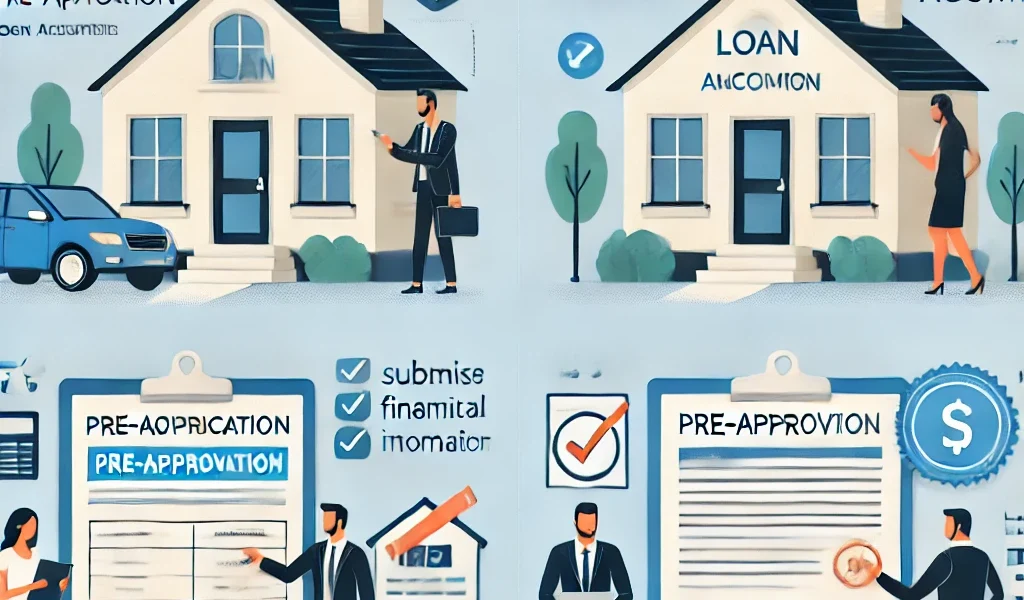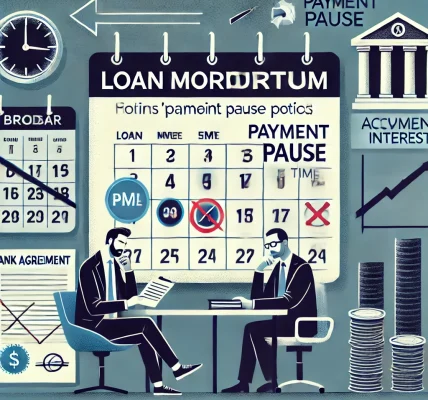Introduction
When applying for a loan, especially a mortgage or a personal loan, you may come across the terms pre-approval and pre-qualification. While they may seem similar, they serve different purposes in the lending process. Understanding the distinction between loan pre-approval and pre-qualification is essential for borrowers who want to secure financing effectively.
This guide explains the differences between pre-approval and pre-qualification, their benefits, and which one might be best suited for your needs.
What is Loan Pre-Qualification?
Loan pre-qualification is an initial assessment that helps borrowers understand their potential loan eligibility. It is usually a quick process and involves providing basic financial information to a lender.
Key Features of Pre-Qualification:
- Informal Assessment: Lenders conduct a high-level review of a borrower’s financial profile.
- Self-Reported Information: Borrowers submit details about their income, assets, debt, and credit score.
- No Hard Credit Check: Since it involves only a soft inquiry, it does not impact credit scores.
- Estimates Loan Eligibility: Provides an idea of how much a borrower might qualify for, but it’s not a firm commitment.
- Quick Process: Often completed within minutes to a few days.
Pros of Pre-Qualification:
- Fast and easy process.
- Helps borrowers understand their loan options.
- No impact on credit score.
Cons of Pre-Qualification:
- Not a guaranteed loan offer.
- May not be taken seriously by sellers in a competitive market.
What is Loan Pre-Approval?
Loan pre-approval is a more in-depth evaluation of a borrower’s financial standing. Lenders thoroughly analyze income, credit history, assets, and debts to determine a borrower’s loan eligibility.
Key Features of Pre-Approval:
- Comprehensive Review: Requires submission of financial documents such as tax returns, pay stubs, and bank statements.
- Hard Credit Check: Lenders perform a thorough credit analysis, which may slightly impact the borrower’s credit score.
- Conditional Loan Offer: A lender issues a written commitment stating the maximum loan amount the borrower qualifies for.
- Stronger Position for Buyers: Pre-approval gives borrowers an advantage in competitive real estate markets.
- Valid for a Limited Period: Usually valid for 60-90 days, after which it may need renewal.
Pros of Pre-Approval:
- Provides a clear idea of loan eligibility and potential interest rates.
- Strengthens the borrower’s position when negotiating with sellers.
- Helps speed up the final loan approval process.
Cons of Pre-Approval:
- Requires more time and documentation.
- A hard credit check can slightly lower credit scores.
Pre-Approval vs. Pre-Qualification: A Side-by-Side Comparison
| Feature | Pre-Qualification | Pre-Approval |
|---|---|---|
| Purpose | Initial estimate of loan eligibility | Formal approval based on financial documents |
| Credit Check | Soft inquiry (no impact on credit score) | Hard inquiry (may slightly lower credit score) |
| Documentation | Minimal, self-reported financial data | Extensive financial verification required |
| Processing Time | Fast (a few minutes to days) | Takes longer (several days to weeks) |
| Strength for Buyers | Weaker | Stronger (preferred by sellers and lenders) |
| Loan Guarantee | Not a commitment | Conditional approval based on verification |
Which One Should You Choose?
- For Casual Loan Shopping: Pre-qualification is a great starting point for borrowers exploring their options.
- For Serious Home Buyers or Loan Applicants: Pre-approval is the best option as it provides a more reliable indication of loan eligibility.
- For Competitive Markets: Pre-approval strengthens a borrower’s position, especially when purchasing a home.
Steps to Get Pre-Qualified and Pre-Approved
How to Get Pre-Qualified:
- Research Lenders: Compare multiple lenders to find the best options.
- Submit Financial Details: Provide income, credit score, debts, and other relevant information.
- Receive an Estimate: The lender gives a rough idea of loan eligibility based on self-reported details.
How to Get Pre-Approved:
- Gather Financial Documents: Include tax returns, bank statements, W-2s, and credit reports.
- Apply with a Lender: Submit an official application for loan pre-approval.
- Undergo Credit and Financial Review: The lender performs a hard credit check and evaluates financial history.
- Receive Pre-Approval Letter: If approved, you get a document outlining the approved loan amount and terms.
Conclusion
While both pre-qualification and pre-approval help borrowers assess their loan options, pre-approval is the stronger choice for serious applicants. It carries more weight in the lending process and gives borrowers a competitive edge.
Before applying for any loan, research lenders, understand their requirements, and choose the option that aligns best with your financial goals. By doing so, you can navigate the loan process with confidence and secure the best possible terms.




